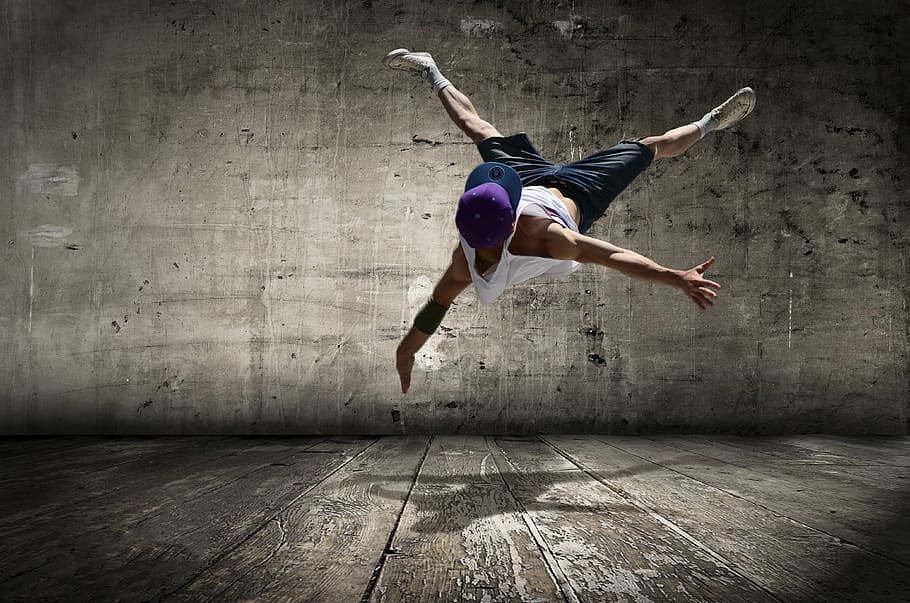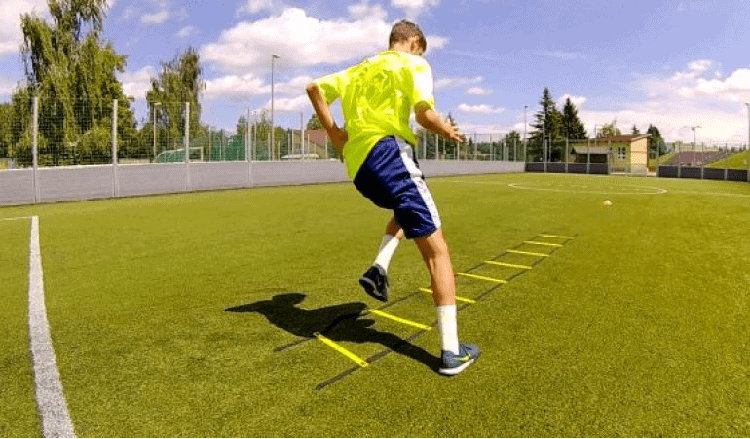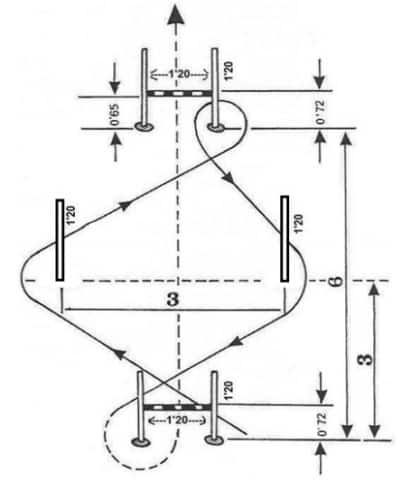With this article, we aim to highlight the importance of agility in physical education, specifically during childhood and adolescence, and to present 2 tests for its evaluation.
What is agility?
From a general point of view, Pradet (1) states that agility is “the ability to express maximum efficiency in movement”.
Authors like Sheppard and Young (2) consider agility as the ability to perform quick body movements that involve changes in direction, speed, or both in response to a stimulus.
Recently, agility is understood as a skill that involves changes in speed, direction, and/or movement patterns in response to a relevant external stimulus, influenced by physical, technical, and perceptual-cognitive factors (3).
Classification of agility in physical education
According to Sheppard and Young (2), the following classification of types of agility in physical education can be established:
Simple agility
In this type of agility, there is no spatial or temporal uncertainty. For example, a floor routine typical of gymnastics, which refers to a previously planned activity that begins when the athlete desires.
Temporal agility
There is temporal uncertainty, but a movement is previously planned (spatial confidence). This would be the case at the start of an athletics sprint, where there is no certainty about when the start signal (gunshot) will occur.
Spatial agility
There is spatial uncertainty, but the rhythm of the movement is previously planned (temporal confidence). For example, receiving a serve in sports like volleyball, tennis, badminton, and other racket sports.
Universal agility
There is both temporal and spatial uncertainty. This type of agility is typical of team sports, such as ice hockey, soccer, basketball, as offensive and defensive actions occur where athletes cannot anticipate the opponent’s movements with certainty.
Determinant factors of agility
Agility in physical education depends on two essential components: decision-making and change of direction. Based on this, a series of determinant factors of agility in physical education can be highlighted (4).
Factors related to perception and decision-making
Among these factors that determine agility in physical education, the knowledge of the situation, anticipation, visual scanning, or reaction time, among others, stand out.
Factors related to change of direction
In this group of factors, the following can be mentioned:
- Technique, depends on foot position, stride adjustment to accelerate or decelerate, lean mass, and postural balance.
- Maximal linear speed, influenced by stride frequency and amplitude, limb stiffness and asymmetry, etc.
- Muscle qualities, including reactive strength (related to power), isometric, concentric, and eccentric strength.
- Anthropometry, mainly determined by height (limb length) and weight (fat-to-body mass ratio).
Evolution of agility in childhood and adolescence
Scientific evidence regarding the evolution of agility in physical education, specifically during childhood and adolescence, is quite limited, with recent considerations on this matter, in general, according to Muntaner and Villa (5).
- The change of direction evolves naturally during childhood and adolescence, with both sexes having similar values in the prepubertal stage. However, at the onset of puberty, notable differences between sexes occur, around 13-14 years, with boys achieving better values than girls.
- The evolution of agility in physical education, in general, is based on adaptations of the central nervous system, determined by increased levels of testosterone, androgens, and/or growth hormone (GH) secretion. These hormonal changes result in an increase in the ability to produce strength before and during puberty.
- In childhood and adolescence, repeated exposure to a given stimulus will produce faster response times, as well as a general improvement in cognition, due to the strengthening of existing synaptic pathways. For this, it is essential to propose different exercises and sports activities, where agility in physical education is worked on, thus expanding the motor repertoire of children and adolescents.
Activities for improving agility
There is a wide variety of activities for improving agility in physical education, with the following standing out (5):
- Sprints with changes of direction.
- Strength exercises.
- Plyometric exercises.
- Combination of strength and plyometric exercises.
- Modified games.
More specifically, how could a session for working on agility in physical education be structured?
In relation to this, Lloyd and colleagues (6) proposed a session plan for agility in physical education divided into 3 phases:
- Phase 1. Movement skills related to agility. In this phase, it is proposed to perform 11 exercises executing 2 to 3 sets of 10-14 repetitions in each set, depending on the exercise. Some examples of exercises would be lateral jumps with feet together, holding the position for a few seconds. A variation of this exercise could be the well-known “skaters,” which consist of lateral jumps with unilateral support, alternating the foot in contact with the ground.
- Phase 2. Change of direction. 3 exercises are proposed where multiple changes of direction are performed with a duration of 10 seconds in each repetition. For this, circuits with cones, games in small spaces involving changes of direction, relay games where zig-zag must be performed, etc., can be done.
- Phase 3. Reactive agility work. Some examples would be games like trying to carry an object to a specific area (carrying it in hand or driving it with the foot, etc.), while another partner tries to prevent it. In this type of game, changes of direction, accelerations, and decelerations occur.
Phase 1 would constitute the majority of the session, about 60%, while phases 2 and 3 would involve 25% and 15% of the session time, respectively.
Evaluation of agility in physical education
When evaluating agility in physical education, it is quite complex to find a test that measures only this quality, due to its relationship with other basic physical abilities and/or motor qualities.
Below, some tests for assessing agility in physical education are highlighted.
“4×10 meter speed-agility test”.
Undoubtedly, in the school context, most authors agree on conducting the 4×10 meter speed-agility test, included in the ALPHA-Fitness battery (7).
- Objective: measure agility, displacement speed, and coordination.
- Necessary materials: stopwatch, measuring tape, 4 cones, and 3 sponges.
- Description. Two parallel lines are drawn on the ground 10 meters apart, and a sponge (B) is placed on the starting line, with two sponges on the opposite line (A and C). At the signal, the student (without a sponge) runs as fast as possible to the opposite line and picks up sponge A, returns to the starting line, leaves sponge A, and picks up B. The same route is repeated, leaving sponge B and picking up C, finishing the test when crossing the starting line and leaving sponge C.
“Agility circuit” test
Another test where agility in physical education is also measured, but not specific to the educational context, corresponds to one of the tests for entry into the national police force, the agility circuit.
In my teaching practice, I include this test in higher courses, 4th ESO and 1st Baccalaureate, as in some cases, students may be interested in the entry tests for this force, in addition to being a test that arouses curiosity and motivation.
Obviously, this type of test is not advisable to use as grading elements, but as means to promote self-improvement and self-evaluation of students regarding their physical qualities.
- Objective: measure agility and reaction speed.
- Materials: cones, poles, measuring tape, and stopwatch.
- Description. The performer stands at the first hurdle to start the test. Immediately, they must circle the first cone and move to the next hurdle, passing under it. Then, they will head to the next cone, to move to the second hurdle, which they must jump over. Finally, they will move to the last one, which they must also jump over.
Conclusion
Agility in physical education, according to different authors, is considered a capacity, quality, and even skill. However, it is true that most authors agree on its relationship with other capacities and qualities, such as speed, flexibility, coordination, among others.
Despite this controversy regarding its denomination, it is a quality that can be considered as resulting from others, but whose development is essential both in childhood and adolescence, and undoubtedly, working on agility in physical education is the ideal context to work on it through exercises and activities of various types.
Bibliographic references
- Pradet, M. (1999). Physical preparation. Barcelona: Inde.
- Sheppard, J. M. & Young, W. B. (2006). Agility literature review: classifications, training and testing. Journal of Sports Sciences, 24(9), 919-932.
- Escobar, P. and González, A. (2020). Agility and sport. Retrieved on 07/23/2023.
- Faigenbaum, A. D. and colleagues. (2019). Essentials of youth fitness. In essentials of youth fitness.
- Muntaner, A. and Villa, E. (2023). Fit child. From science to the schoolyard. Editorial Transverso.
- Lloyd, R. S. & colleagues. (2013). Considerations for the development of agility during childhood and adolescence. Strength and Conditioning Journal, 35(3), 2-11.
- Ruíz, J. and colleagues. (2011). ALPHA-Fitness battery: field test for the evaluation of health-related physical condition in children and adolescents. Nutrition hospitalaria, 26(6), 1210-1214.




